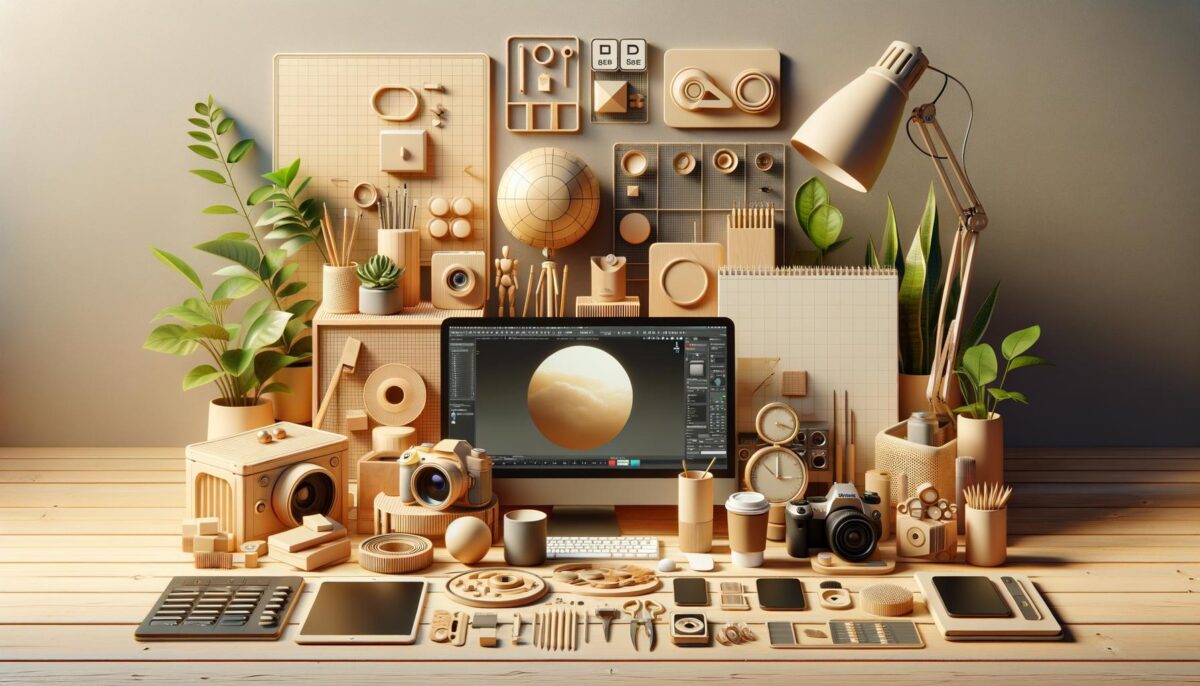Understanding the Landscape of Product Design Software
Product design is a field that seamlessly blends creativity with technical skills. To thrive in this domain, selecting the right software is vital. With advancements in technology, designers have access to a vast range of tools that cater to different aspects of product creation, from 3D modeling to prototyping and computer-aided design (CAD). These tools are not only essential for professional designers but are also becoming increasingly intuitive for beginners entering the industry.
3D Modeling: Crafting Concepts in Three Dimensions
3D modeling is a core aspect of product design that allows designers to visualize ideas in a three-dimensional space. This process is crucial for creating detailed representations of objects before they are realized in the physical world. Some software tools offer features that make 3D modeling accessible even to beginners. Important factors to consider when selecting 3D modeling software include user interface usability, precision in rendering, and the ability to work with multiple file formats. Additionally, collaborative features are becoming desirable as they enable teams to work seamlessly together.
- User-friendly interfaces that simplify navigation
- Capabilities for rendering high-quality visuals
- Support for collaborative projects with real-time updates
Prototyping Tools: Bridging Ideas and Reality
The role of prototyping tools in product design cannot be understated, as they help bridge the gap between an initial idea and its practical implementation. These tools allow designers to test functionality, identify design flaws, and make necessary modifications before moving to mass production. Prototyping software typically provides features like interactive simulations, user feedback integration, and analytics. Such functionalities are particularly valuable for ensuring that the end product meets user needs and industry standards.
- Interactive simulations for early testing
- Integration of user feedback mechanisms
- Analytical tools for performance tracking
CAD Software: Precision in Engineering Design
Computer-aided design (CAD) software is indispensable for achieving precision in engineering design. These tools provide a comprehensive environment for drafting, modeling, and simulating products. CAD software often includes advanced features for stress analysis, material specifications, and complex calculations. While some CAD software can appear daunting to beginners, many provide training modules and community support to ease the learning curve. Investing time in mastering CAD tools can significantly enhance a designer’s capability to bring meticulously detailed projects to life.
- Stress analysis and material specification features
- Extensive support communities and training resources
- Precision measurement tools for exact specifications
User-Friendly Options for All Skill Levels
Not all designers are experts, and the design software industry recognizes this by creating user-friendly options that cater to varying skill levels. Beginner-friendly interfaces with guided tutorials make it easier for newcomers to start their journey in product design without feeling overwhelmed. For professionals, these tools offer advanced capabilities without sacrificing the ease of use. This balance ensures that designers of all skill levels can advance their projects effectively while focusing on innovation and creativity.
Conclusion: The Right Tool for the Right Designer
In the dynamic field of product design, having the right software tools is crucial for success. Whether you’re focusing on 3D modeling, prototyping, or CAD, the tools discussed provide a broad range of capabilities to support designers at every stage of their professional journey. From user-friendly interfaces for beginners to sophisticated features for seasoned professionals, these tools enable the creation of exceptional product designs. Selecting the right software ultimately depends on individual needs, project requirements, and the desire to innovate. By leveraging these tools, designers can transform ideas into groundbreaking products that stand out in the marketplace.
